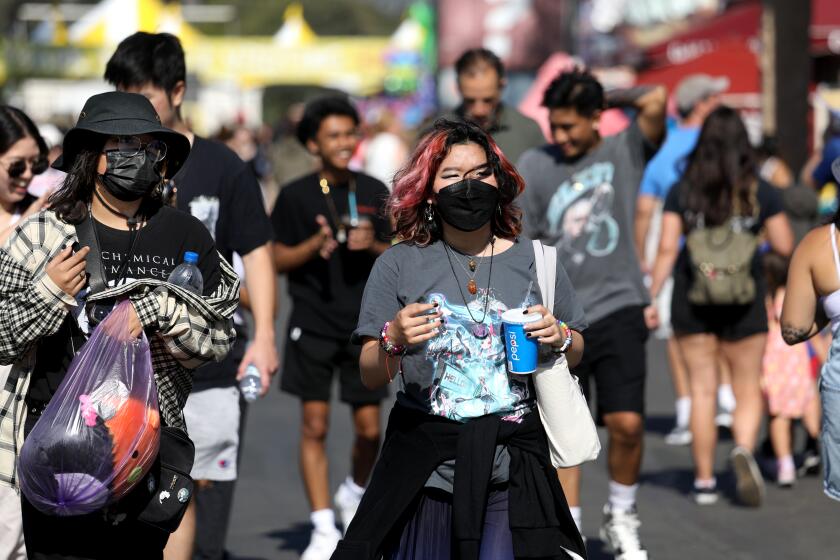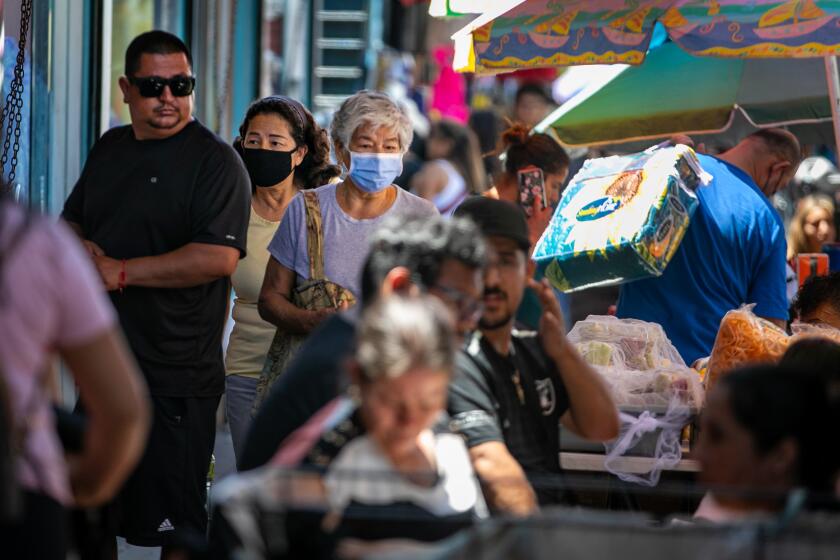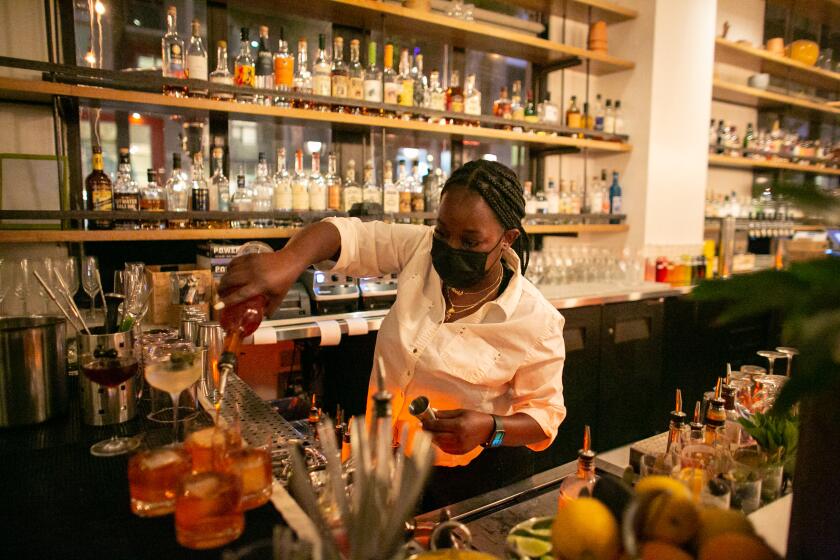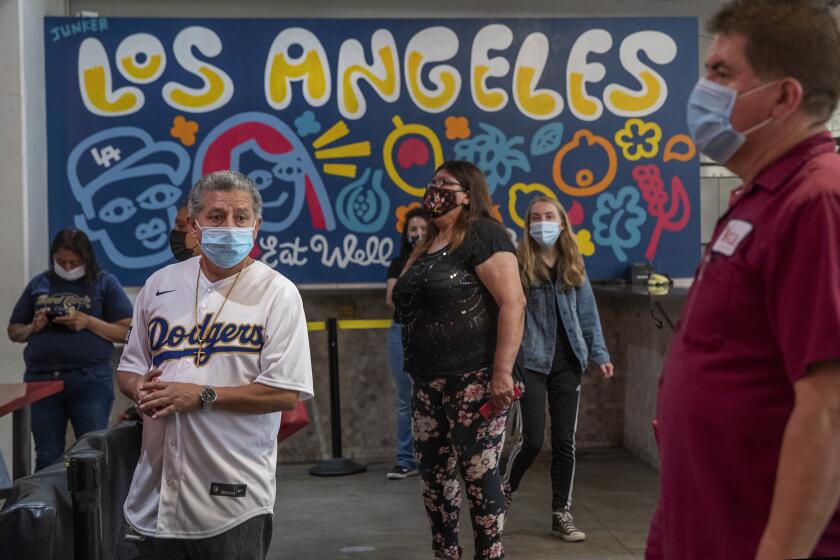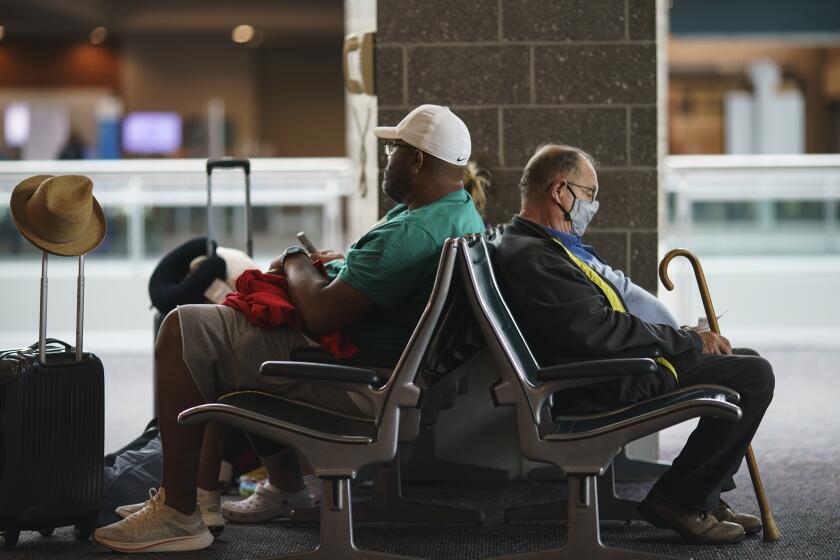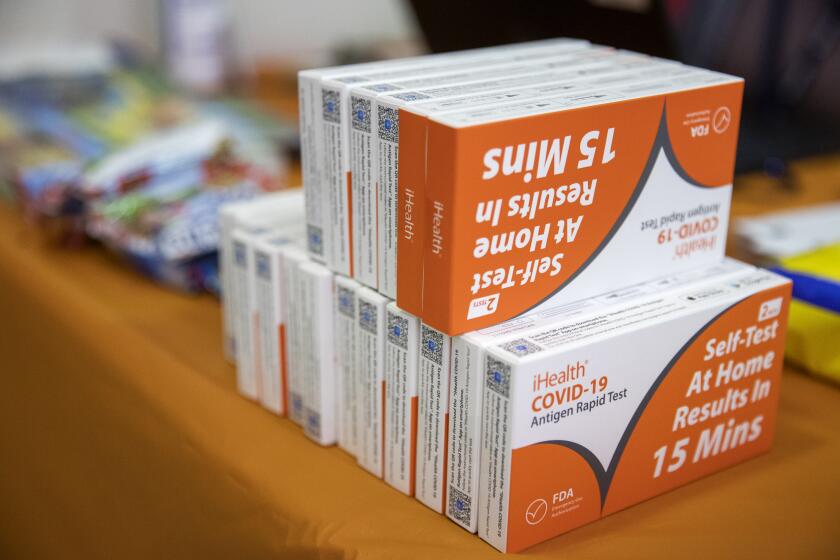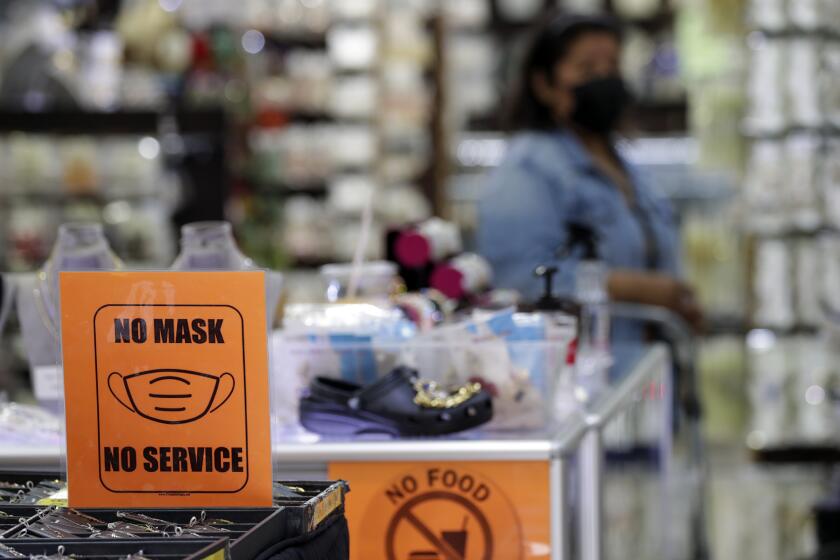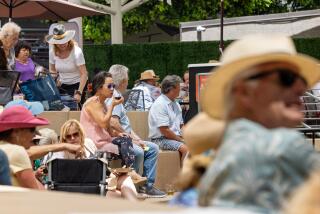How safe are indoor dining, bars, big events as COVID slams California?
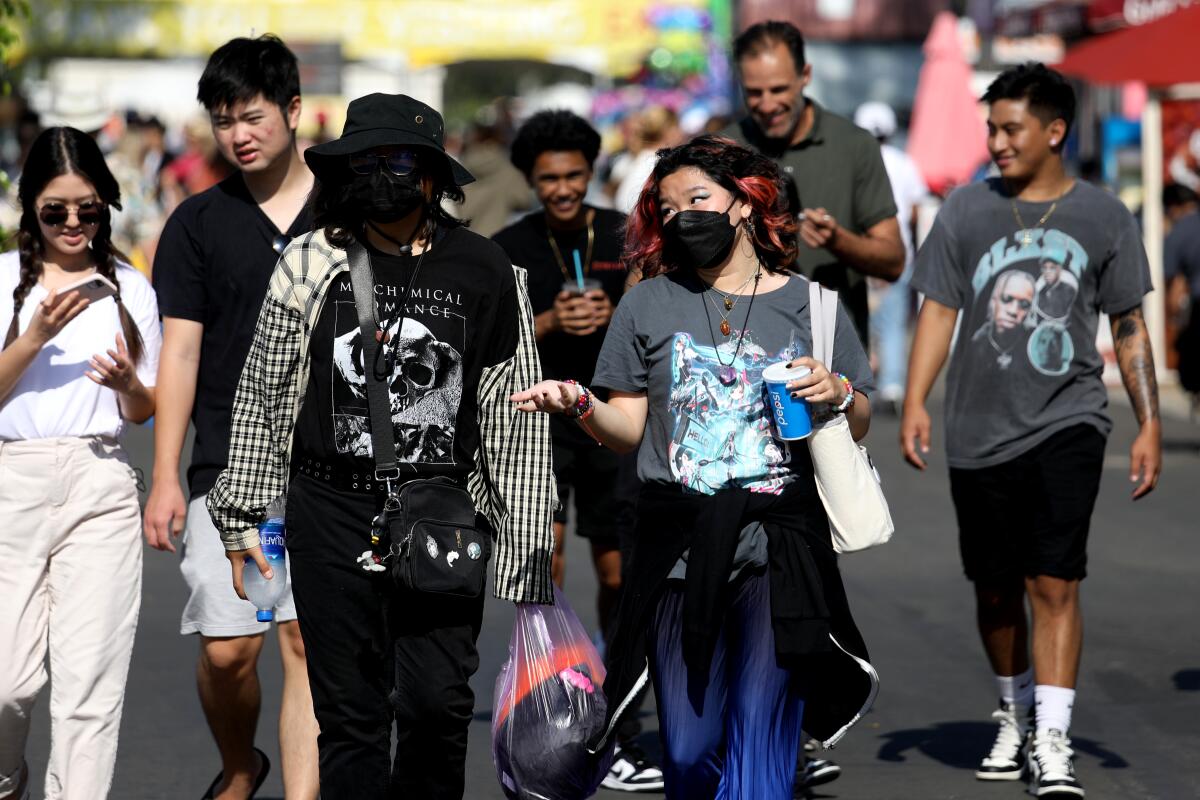
- Share via
With super-infectious Omicron subvariants spreading across California, it’s hard to know what activities are still safe — or smart — to do.
Experts agree that people vaccinated and up to date on booster shots are still well protected against serious disease. But given the now-dominant BA.5 subvariant, which is particularly good at evading immunity from vaccines or a recent Omicron infection, these groups are still susceptible to COVID-19.
“Everyone should be wary of it — of BA.5 and these new variants — but not afraid of it,” said Dr. Peter Chin-Hong, a UC San Francisco infectious-disease expert. “If you’re maximally up to date on your vaccines, it’s not going to make you very ill.”
But for those who haven’t gotten boosted or been vaccinated at all, Chin-Hong said the chance for severe illness remains a concern, even during this wave, which has been less deadly than prior ones. That unprotected group currently makes up the majority of COVID-positive ICU patients, he said.
Many who become infected are not falling seriously ill. While hospitalizations are rising, patients are generally less sick, and intensive care units are less crowded than in previous surges.
Experts say there are a host of reasons why people should ramp up other protections, including masking, testing and increasing ventilation, while transmission is so high:
- to minimize the risk of long COVID, which some studies have found affects almost 25% of people who get infected
- to avoid second COVID infections, which have been linked to an increase in other negative health outcomes
- to protect vulnerable community members, such as the immunocompromised or elderly, who are most at risk of illness or death
- to avoid interruptions to day-to-day life, including child care arrangements, work absences or travel plans
- to reduce opportunities for new variants to develop
“When transmission is really high, we would be foolish to be complacent. ... This is a dangerous virus,” Los Angeles County Public Health Director Barbara Ferrer has said. “If we can slow down transmission, we have a good chance of preventing some people from dying in the upcoming months.”
Ferrer might implement a countywide indoor mask mandate this week unless cases and hospitalizations drop in the coming days. And while that could change precautions taken in indoor public spaces, it still leaves a lot of room for people to make decisions about gatherings with friends and family, going out to eat, summer travel and more.
Coronavirus cases are rising in California because of super-infectious Omicron subvariants BA.4 and BA.5. But the public is not on high alert.
“Being vaccinated and indoor masking are two relatively benign things that have a lot of weight,” said Dr. Peter Katona, a professor of epidemiology at UCLA. “Ultimately, it’s your risk tolerance that decides what you do or don’t do.”
Even among public health experts, there are differences in what might be considered risky during this latest wave. But in general, health officials said when deciding where to go and how to interact, people should consider the transmissibility of the virus — which is very high right now — how close they will be to others in a particular setting and how much the surrounding air is circulating.
“We’re stuck in the ‘everybody wants this to go away,’ but it’s not going to go away,” said Dr. Kimberly Shriner, an infectious disease specialist with Huntington Hospital. She said during this surge and any future ones, people should be ready to resume using tools for greater protection until cases begin to dip.
“Just like with rainy weather, you might go inside or use an umbrella,” Shriner said. “We’re in the middle of the surge, I’m going to ramp up some of the things to protect myself. ... We have the tools to deal with this, albeit our tools are not perfect.”
Atop inflation and staffing shortages, L.A. restaurant and bar owners express worry about ‘policing’ the public if masking returns.
Indoor dining
“If you really think about it, you don’t have to avoid [indoor dining] like in the old days because you have so many tools — even for an unvaccinated person,” Chin-Hong said. He recommended picking a spot that is spacious and ideally with some airflow, like near an open window, and wearing a mask while moving around the restaurant, such as when going to the restroom.
Dr. Robert Wachter, chair of UC San Francisco’s Department of Medicine, said he’s not yet comfortable eating at an indoor, crowded restaurant — though he said it’s not unreasonable for people to do so. He said given that about 5% of hospital patients are testing positive for COVID-19, even when not seeking treatment for COVID, he doesn’t like the chances of dining out right now.
“In a crowd of 50 people, there’s near certainty that one person, at least, has COVID,” Wachter said.
Shriner said that people need to think of the next few weeks as a wave that will pass but could come back — like bad weather.
“In restaurants, people are talking loudly and they’re close together, and this particular variant, BA.5, is even more infectious than measles,” Shriner said. “For the next seven to 10 days, this is the peak of the surge; this is not the time to go to an indoor restaurant.”
Even as California’s mask order is set to expire next week, health officials are still encouraging people to wear masks while transmission rates are up.
Outdoor gatherings
Public health experts agree that outdoor gatherings remain the safest option, even though the latest subvariants are so contagious, they can spread outside. But none recommended outdoor masking unless in an exceptionally crowded space.
“I still think it’s relatively not risky,” Chin-Hong said, although he did carve out a scenario — “a mosh pit at Coachella during a non-windy day” — that could cause concern.
Wachter agreed but said there are levels of safety, even outdoors. “Outdoors is much better than indoors, but better with more space, better if people aren’t shouting at you, better with a breeze.”
He said if he’s at a ballpark, he would have a mask in his pocket in case the bathroom or hot-dog line felt stuffy and crowded.
Shriner said for larger events — even outdoors — it might make sense to delay them a week or so or ask people to test beforehand.
“An outdoor wedding that’s kind of spaced out, there’s a nice breeze blowing … that’s much safer,” Shriner said. “Is it absolutely safe? No.”
The CDC’s chief medical officer has advice for travelers looking to stay safe when people around them have ditched their masks.
Large indoor events
Experts recommend wearing a good-fitting mask at large, indoor events. But Wachter said there are other precautions people and venues can take, such as increasing ventilation with fans, open windows or air filters and asking people to take a rapid test before attending.
“You can make them safer, but you can’t make them completely safe,” he said.
Chin-Hong said he’s heard of people strategically planning booster shots to increase protection before a big event or trip. He also recommended making a plan for how and where to get Paxlovid, Pfizer’s COVID pill that can reduce the worst symptoms, if someone does end up getting infected after a big event. He said if someone lives with grandparents or other high-risk people, it’s also smart to test after events for a few days and monitor for symptoms.
“You have these multiple tools. You don’t go crazy, but you use them … and you engage in life,” Chin-Hong said.
At-home testing is widespread these days. But chances are the results aren’t making their way into the public health system.
Trips or summer camp
For air travel, experts recommend wearing a mask while in the airport and on a plane, especially during takeoff and landing.
“I don’t worry as much about flying on the aircraft as the airport,” Shriner said. “All of us are probably exposed to the virus all the time, but you have to have a certain amount of the virus to get infected.”
Katona said there’s no reason to cancel or stop traveling, but there are ways to be smart, such as opening windows and wearing masks while in a taxi or Uber.
“The car is highly concentrated air,” he said.
Ferrer and Chin-Hong both said it’s a good idea to test before heading out on a big trip and to do the same for kids going to summer camp — and upon return.
“The best advice is really to vaccinate your kids and then boost them if they’re eligible,” Chin-Hong said. “That will give you peace of mind they won’t get terribly ill.”
Wastewater data suggest many at-home tests showing infections aren’t being recorded in officially reported coronavirus case counts.
Bars or clubs
Going out to crowded bars or nightclubs remains the most risky activity for catching and spreading the coronavirus, health experts warn.
“Those are very high-risk congregant settings. You have people very close together, they’re having a good time, they might be uninhibited a bit,” Shriner said. She’s heard some people saying they might as well “get it and get it over with,” but she called that rationale flawed, especially now.
“That doesn’t work because with this variant you can go out and get it again and again and again,” Shriner said.
Chin-Hong, though, said there are ways to make going out safer. He recommended avoiding crowded, poorly ventilated bars and staying more separated from a crowd.
“There’s still a lot of joy you can have on the edge or spilling outside,” said Chin-Hong, who recommended sitting near windows or in an outdoor section.
More to Read
Sign up for Essential California
The most important California stories and recommendations in your inbox every morning.
You may occasionally receive promotional content from the Los Angeles Times.
